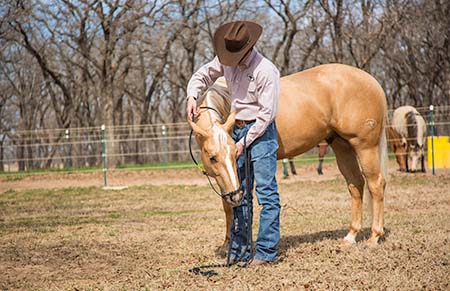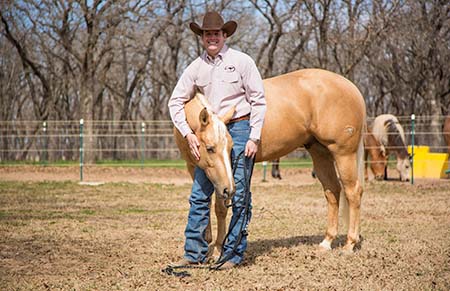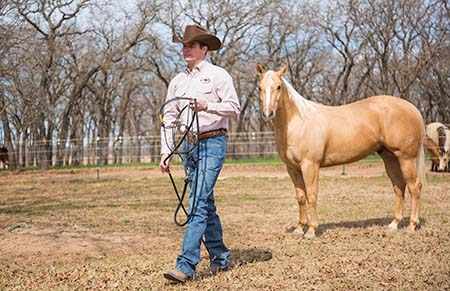2024 Clinician Academy
Learn MoreLocation

It’s often the day-to-day tasks that speak volumes about how well trained a horse is and how great of a horseman you are. One daily task that I’m extremely nitpicky about is how I put on and take off my horses’ halters. A well-broke, respectful horse will stand quietly and drop his head for you to halter and unhalter him. He’ll even tip his head toward you so that you’re not having to stand on your tiptoes and dance around to try to reach him.
I teach all of my horses to lower their heads using the Intermediate exercise Touch and Rub: Poll. Then I teach them to tip their heads and necks toward me. I do that by standing on the left side of the horse and when the horse’s head is level with my belt, I reach my right arm over his head and apply pressure to the right side of his face with my fingertips. As soon as he yields to the pressure by tipping his head toward me, I rub the pressure away.
Initially, you can help your horse understand by pulling on the halter to apply pressure. With consistent practice, your horse will automatically “assume the position” when you go to halter or unhalter him. While it’s a small detail, it’s one that sets the tone for the start and end of the time you spend with your horse. This is especially true when you take the halter off him.



Have a horsemanship question or looking for more training tips? Check out the No Worries Club.